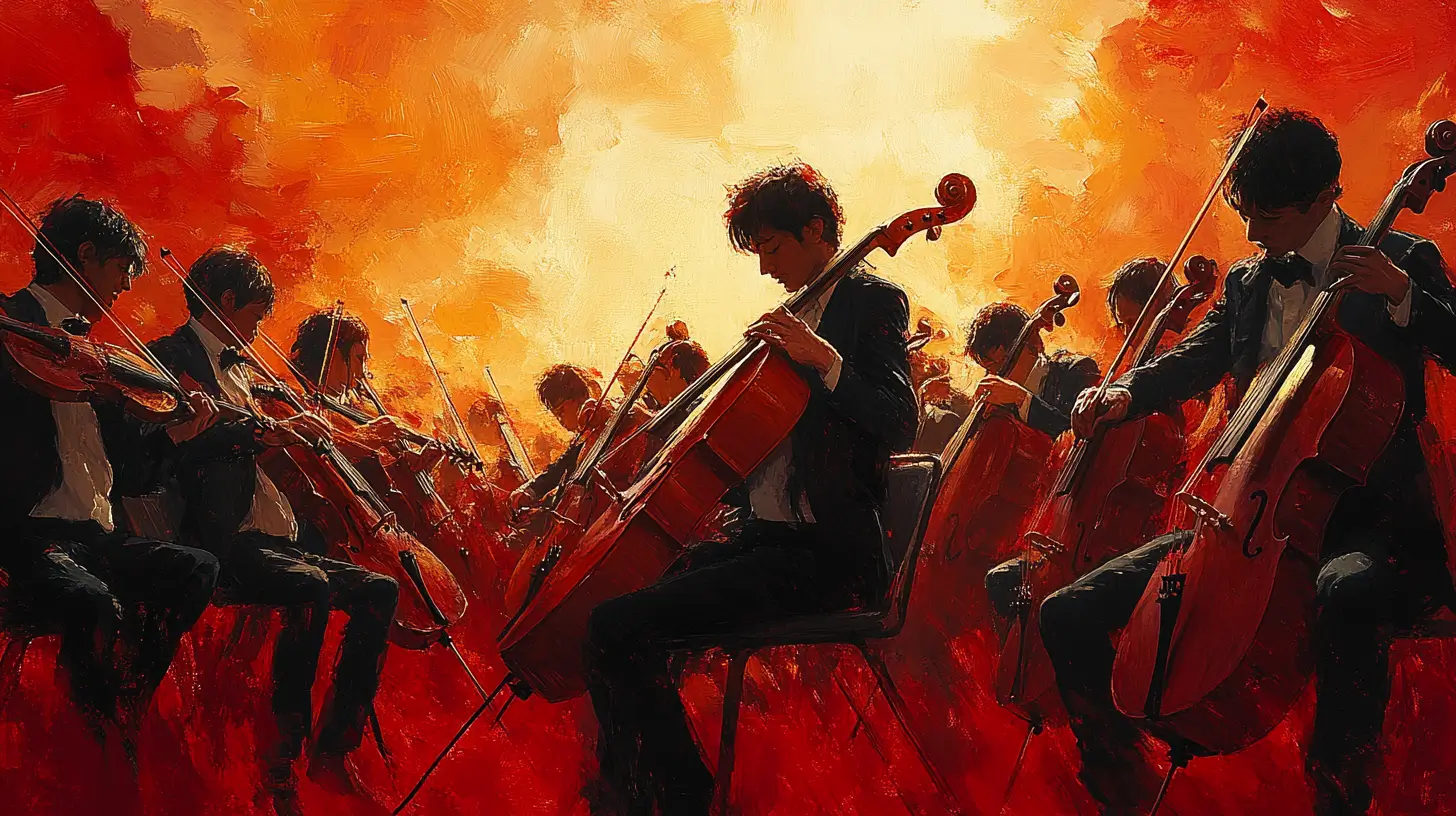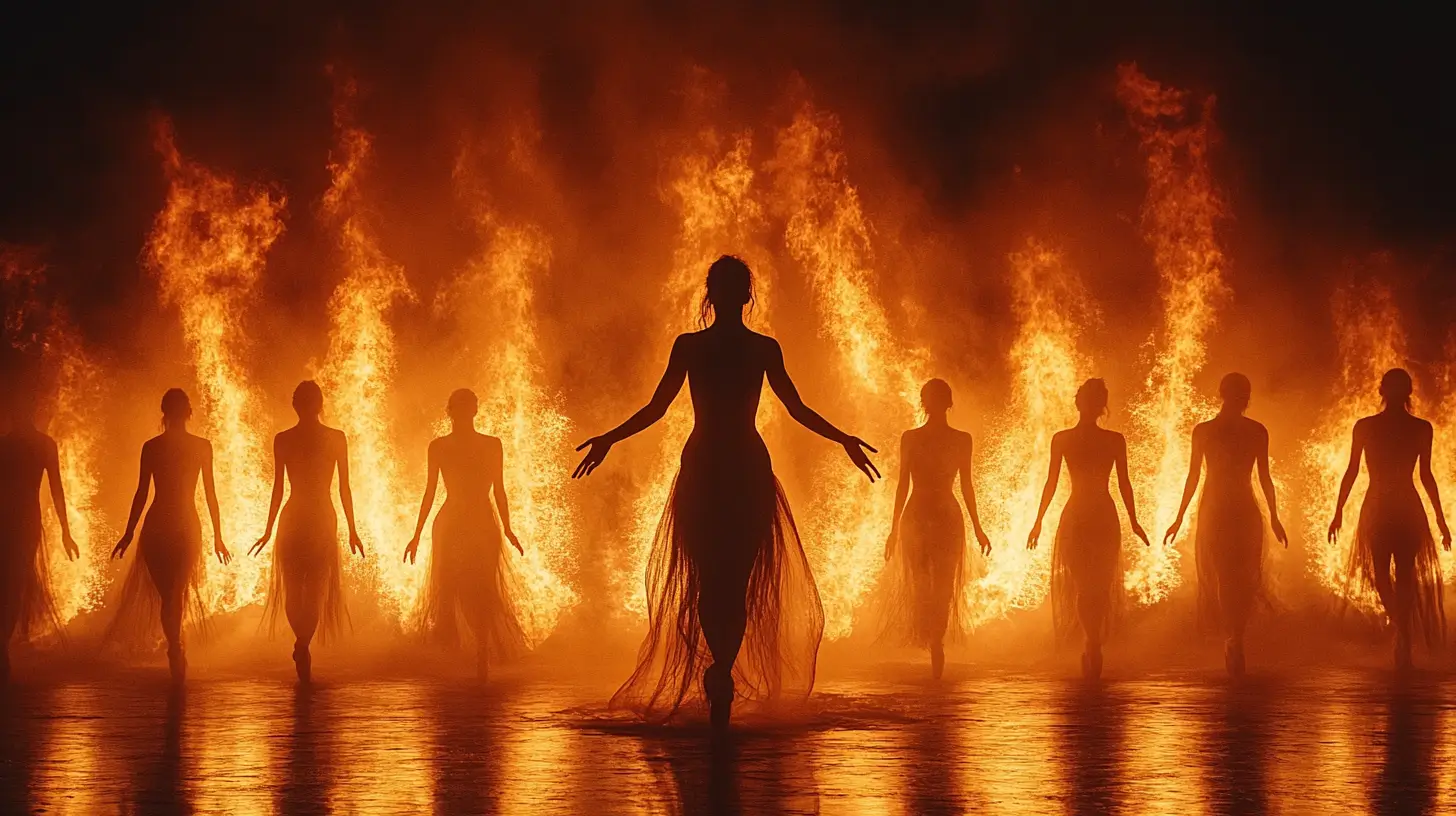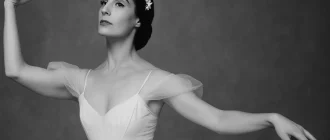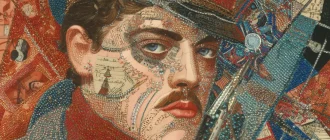The Firebird ballet, a masterpiece of the Ballets Russes, stands out for Igor Stravinsky’s powerful music and Michel Fokine’s inventive choreography. Discover the origins rooted in Russian folklore, follow the magical story of Prince Ivan and the Firebird, and see how this ballet has influenced the dance world.
Key Takeaways
- Sergei Diaghilev’s vision for ‘The Firebird’ aimed to elevate Russian culture in Paris, leading to a groundbreaking collaboration with composer Igor Stravinsky and choreographer Michel Fokine.
- The narrative of ‘The Firebird,’ rooted in Russian folklore, follows Prince Ivan’s quest aided by the mystical Firebird to defeat the evil sorcerer Kashchei, intertwining themes of bravery, magic, and love.
- Stravinsky’s innovative music for ‘The Firebird,’ marked by a blend of folk melodies and modern orchestration, alongside Fokine’s revolutionary choreography, established the ballet as a seminal work with lasting influence on future productions.
| Aspect | Details |
|---|---|
| Title | The Firebird (L’Oiseau de feu) |
| Composer | Igor Stravinsky |
| Choreographer | Originally choreographed by Michel Fokine |
| Libretto | Michel Fokine, inspired by Russian folk tales about the magical Firebird |
| Premiere | June 25, 1910, at the Théâtre National de l’Opéra, Paris |
| Ballet Company | Commissioned by Sergei Diaghilev for the Ballets Russes |
| Notable Roles | – Firebird: A mystical creature |
| – Prince Ivan: The protagonist who encounters the Firebird | |
| – Kashchei the Immortal: The evil sorcerer | |
| – Tsarevna: A princess trapped by Kashchei | |
| Synopsis | Prince Ivan wanders into Kashchei’s enchanted realm and captures the Firebird. She offers him a feather to summon her in exchange for freedom. Later, when Ivan falls in love with Tsarevna and confronts Kashchei, he uses the feather to call the Firebird for aid, who helps him defeat the sorcerer and break the spell, freeing the princesses. |
| Musical Style | Blends Russian folk melodies with modernist influences, marking Stravinsky’s innovative approach |
| Choreographic Style | Classical ballet mixed with folkloric elements, designed to evoke Russian fairy tales’ magical and exotic atmosphere. |
| Famous Productions | Notable productions by The Royal Ballet, American Ballet Theatre, and Mariinsky Ballet, each bringing unique interpretations and stylings to the work |
| Legacy | The Firebird is celebrated for its innovative music and choreography, marking the beginning of Stravinsky’s collaboration with Ballets Russes and his rise as a major composer in the 20th century. The ballet remains a staple in major ballet companies worldwide. |
Origins of The Firebird

The origins of “The Firebird” are deeply rooted in the rich soil of Russian folklore, which provided a fertile ground for artistic innovation. Sergei Diaghilev, the mastermind behind the Ballets Russes, envisioned a ballet that would showcase the sophistication of Russian art to the Parisian audience. He aimed to create a spectacle that would entertain and elevate Russian culture on the international stage. Diaghilev’s vision was brought to life through the combined efforts of choreographer Michel Fokine and a team of talented artists who drew inspiration from traditional Russian stories.
“The Firebird” narrative was intricately woven from old Russian folklore, integrating elements that resonated with the audience’s sense of wonder and enchantment. Diaghilev’s commitment to this project was unwavering, and he sought a composer who could translate this magical narrative into a powerful musical score. This search ultimately led him to a young and relatively unknown composer, Igor Stravinsky, whose music would become the heartbeat of the ballet.
Sergei Diaghilev’s Vision
Sergei Diaghilev was a visionary impresario whose passion for Russian art and culture knew no bounds. His mission was to present ballet as a sophisticated art form that could stand shoulder-to-shoulder with the best Parisian culture. Diaghilev commissioned the full-length ballet score for “The Firebird,” a task that required a composer who could capture the essence of Russian folklore while appealing to Western tastes. Initially, Diaghilev approached several well-known composers but eventually turned to Igor Stravinsky due to various delays and circumstances. This decision would lead to the creation of Diaghilev’s ballets russes.
The collaboration with choreographer Michel Fokine was pivotal. Fokine’s innovative approach to choreography aligned with Diaghilev’s desire to break away from traditional ballet norms. Together, they crafted a visually stunning and emotionally compelling narrative, ensuring that “The Firebird” would be a groundbreaking production that resonated deeply with audiences.
Choosing Igor Stravinsky
The selection of Igor Stravinsky as the composer for “The Firebird” was a turning point in both the young composer’s career and the history of ballet. Originally, Diaghilev planned to hire Alexander Tcherepnin, another young composer, but he had to find a replacement when that fell through. Stravinsky, though a young composer and relatively unknown, was chosen for his potential and innovative ideas. This decision marked Stravinsky’s first foray into ballet composition, a milestone propelling him to international fame.
Stravinsky’s music for “The Firebird” was unlike anything the world had heard. He blended traditional Russian folk themes with modern orchestration techniques and created a familiar and groundbreaking sound. This unique musical style perfectly complemented the mystical and dramatic narrative of “The Firebird,” solidifying Stravinsky’s position as a leading composer of his time.
The Story of The Firebird

At the heart of “The Firebird” lies a captivating story drawn from the depths of Russian folklore. The narrative centers around Prince Ivan, a brave and noble figure who embarks on a quest that leads him to the enchanted garden of the evil sorcerer Kashchei. Here, he encounters the mystical Firebird, a creature of immense power and beauty. Artists Michel Fokine, Léon Bakst, and Alexandre Benois collaboratively developed the ballet’s scenario, drawing inspiration from traditional folk tales and Polonsky’s poem.
The story unfolds as Prince Ivan, with the aid of the Firebird, confronts and ultimately overcomes the evil sorcerer Kashchei, freeing the enchanted princesses who have been held captive. Among these princesses is the youngest, who forms a romantic bond with Ivan Tsarevich, playing a crucial role in the story’s resolution.
The narrative is rich with themes of bravery, magic, and love, making “The Firebird” a timeless tale that continues to enchant audiences.
Prince Ivan and The Firebird
Prince Ivan’s journey begins in an enchanted forest, where he first encounters the elusive Firebird. During his pursuit, he captures the Firebird but, struck by her beauty and pleading, decides to spare her life. In gratitude, the Firebird gifts Prince Ivan a golden feather, a token imbued with magical powers that will prove crucial in his quest. This encounter establishes a significant alliance between Prince Ivan and the Firebird, setting the stage for the unfolding drama.
As the story progresses, the golden feather becomes a symbol of hope and magic, aiding Prince Ivan in his battle against the dark forces of Kashchei. The bond between Ivan and l’oiseau de feu is central to the ballet’s narrative, reflecting themes of compassion and mutual support that resonate deeply with audiences.
The Evil Sorcerer Tsar
Kashchei the Deathless is the evil sorcerer who wields dark magic to maintain control over his realm. His power is built on fear and enchantment as he captures and imprisons beautiful princesses, holding them under his sinister spell.
Kashchei’s dominion over the kingdom and its inhabitants sets the stage for the central conflict, highlighting the struggle between good and evil.
The Youngest Princess
Amidst Kashchei’s captives is the youngest princess, who plays a pivotal role in the story’s resolution. Her connection with Prince Ivan is crucial in overcoming Kashchei’s dark enchantments and romantic aspects. As Prince Ivan battles the sorcerer, the youngest princess aids him, her presence symbolizing hope and redemption.
Together, they defeat Kashchei, freeing the enchanted princesses and restoring peace to the kingdom.
Stravinsky’s Music for The Firebird

Stravinsky’s music for “The Firebird” blends innovation and tradition, crafting a haunting and exhilarating soundscape. A mix of folk melodies and chromatic scales was used to differentiate between the human and supernatural elements. Praised for vivid storytelling and emotional depth, his compositions brought the characters and narrative to life.
The music of “The Firebird” is characterized by its dynamic orchestration and the orchestra with rich textures, which add layers of complexity to the ballet. Stravinsky’s ability to weave traditional Russian folk themes with an orchestra and modern musical techniques resulted in a timeless and groundbreaking score.
Folk Melodies and Chromatic Scales
In “The Firebird,” Stravinsky masterfully employed folk melodies to represent the human characters while using chromatic scales to convey the supernatural aspects of the story. This contrast created a unique auditory experience highlighting the divide between the mortal and magical realms.
Traditional Russian folk themes added authenticity, grounding the ballet in its cultural roots while allowing the music of the Russian composer to explore new territories.
Orchestration Techniques
Stravinsky’s orchestration for “The Firebird” featured an orchestra with diverse instruments that created a rich and varied sound landscape. The solo and English horns were notable, which added unique timbres to the score. The full bassoon drum, piano, orchestra, and other percussive elements provided dramatic intensity, enhancing the ballet’s emotional impact.
These techniques enabled Stravinsky to create distinct soundscapes for different characters and scenes, deeply integrating music into the storytelling. The innovative use of instruments and their combinations showcased Stravinsky’s genius, solidifying his reputation as a master composer.
Key Musical Moments
One of the most pivotal pieces in “The Firebird” is the “Infernal Dance,” characterized by its vigorous rhythms and dramatic intensity. This piece encapsulates the conflict within the ballet, showcasing Stravinsky’s rhythmic innovation and his ability to create tension through music. The “Infernal Dance” stands out for its energetic orchestral style, sharply contrasting with the ballet’s lyrical passages.
Other key musical moments include the Lullaby and Finale, highlighting Stravinsky’s versatility and emotional range. These pieces advance the narrative while providing moments of reflection and resolution, adding depth to the performance.
Choreography by Michel Fokine

Michel Fokine’s choreography for “The Firebird” was revolutionary. He blended classical techniques around dance with expressive movements, breaking traditional ballet norms. Fokine’s innovative approach emphasized narrative and emotional expression through dancing, making dancing the dance an integral part of the storytelling process, reminiscent of a ballet de feu.
Fokine sought to closely connect the music with the narrative, departing from the practices of his time. His choreography brought the mythical tale to life, capturing the audience’s imagination and elevating “The Firebird” to new heights of artistic achievement.
Collaboration with Stravinsky
The collaboration between Fokine and Stravinsky was a key factor in the success of “The Firebird.” They maintained a close partnership throughout the creative process, ensuring the choreography seamlessly matched the music’s themes and rhythms. This close collaboration allowed Stravinsky to explain complex rhythms directly to the dancers during rehearsals, resulting in a cohesive and captivating performance.
Fokine’s portrayal of the Firebird combined classical ballet with new expressions, creating a powerful and enchanting character. This innovative approach set a new standard for ballet choreography and influenced future productions.
Signature Dance Styles
Fokine’s choreography for “The Firebird” used expressive gestures to convey emotions and character intentions. His innovative style intertwined dance with storytelling, bringing the narrative to life through movement. This approach influenced modern ballet, with choreographers like Jerome Robbins incorporating elements of Fokine’s work into their productions.
Premiere and Reception
The premiere of “The Firebird” on June 25, 1910, in Paris was a landmark event in ballet. The audience’s reaction was nothing short of ecstatic, leading to a standing ovation that underscored the new ballet show’s immediate success. Critics and audiences alike were captivated by the seamless integration of music, dance, and storytelling. Henri Ghéon, a prominent critic, described “The Firebird” as “the most exquisite marvel of equilibrium” between sound, movement, and form.
This triumphant premiere established Igor Stravinsky as a major new composer on the international stage. The success of “The Firebird” elevated Stravinsky’s status and bolstered Sergei Diaghilev’s reputation as a visionary impresario. The ballet’s reception highlighted the potential of Russian art to captivate Western audiences, fulfilling Diaghilev’s ambitious vision.
Paris Premiere
The Paris premiere of “The Firebird” was dazzling, with the audience’s enthusiastic response culminating in a standing ovation. The ballet’s innovative blend of music, choreography, and visual artistry deeply resonated with attendees, who were spellbound by its execution. The performance’s success was a testament to the collaborative genius of Diaghilev, Stravinsky, and Fokine, setting a high bar for future productions.
Critics praised the ballet for its artistic innovation and emotional depth. Henri Ghéon lauded the performance for its perfect balance of sound, movement, and form, calling it “the most exquisite marvel of equilibrium.”
The premiere’s success marked the beginning of a new chapter in the history of ballet, establishing “The Firebird” as a seminal work that would influence future generations.
Impact on Stravinsky’s Career
The overwhelming success of “The Firebird” catapulted Igor Stravinsky to international fame, establishing him as a leading composer of his era. This pivotal moment in his career he has paved the way for subsequent major works. It solidified his partnership with Sergei Diaghilev, resulting in a series of groundbreaking collaborations that would shape the future of modern ballet.
Stravinsky’s innovative approach to composition and orchestration, as showcased in “The Firebird,” became a hallmark of his illustrious career.
Legacy of The Firebird

“The Firebird” has left an indelible mark on the world of ballet, continuing to enchant audiences and influence artists more than a century after its premiere. Diaghilev’s decision to base the ballet on Russian folklore showcased the richness of Russian culture to international audiences, fulfilling his aspiration to elevate Russian art globally. The ballet’s fusion of music and dance set a new standard, inspiring countless productions and adaptations over the decades.
This masterpiece is celebrated not only around dance and for its artistic achievements but also for its cultural significance. “The Firebird” remains a staple in ballet, revered for its innovative choreography, evocative music, and compelling narrative. Its legacy is seen in the works of many modern choreographers and composers who draw inspiration from its timeless beauty and artistic brilliance.
Subsequent Productions
“The Firebird” has seen numerous revivals and adaptations, each bringing its unique interpretation to Stravinsky’s original score. Companies like the Houston Symphony and Los Angeles Philharmonic have reimagined the ballet for contemporary audiences, demonstrating its enduring appeal and versatility.
These productions continue to honor the legacy of “The Firebird,” ensuring its magical story and captivating music remain vital to the cultural landscape.
Influence on Modern Ballet
The influence of “The Firebird” on modern ballet is profound. Choreographers like Jerome Robbins and George Balanchine have drawn inspiration from its themes and musicality, incorporating elements of Fokine’s innovative choreography into their works. Balanchine’s neoclassical style, for instance, was significantly informed by “The Firebird,” reflecting its impact on his artistic development.
Michel Fokine’s portrayal of the Firebird as a powerful and rebellious figure rather than a traditional graceful ballerina revolutionized the role of female characters in ballet. This portrayal has inspired a new generation of choreographers to explore more dynamic forms of dance, ensuring that “The Firebird” continues influencing the ballet world.
Summary
“The Firebird” is a testament to the power of collaboration and the enduring allure of myth and music. From its origins in Russian folklore to its triumphant premiere and lasting legacy, this ballet has captivated audiences and inspired artists for over a century. The visionary efforts of Sergei Diaghilev, the innovative choreography of Michel Fokine, and the groundbreaking music of Igor Stravinsky combined to create a masterpiece that transcends time and culture.
The impact of “The Firebird” on modern ballet and music cannot be overstated. Its influence is seen in countless productions and adaptations, and its themes resonate with audiences today. As we look back on the rich history of this remarkable ballet, we are reminded of the power of art to inspire, transform, and connect us across generations. “The Firebird” remains a shining example of artistic brilliance, a true masterpiece of myth and music.
Frequently Asked Questions
What inspired the creation of “The Firebird” ballet?
The creation of “The Firebird” ballet was inspired by Russian folklore and Sergei Diaghilev’s desire to present Russian art in Paris. This fusion of cultural elements was pivotal in shaping the Firebirds Ballet’s narrative and aesthetic.
Who composed the music for “The Firebird”?
Igor Stravinsky composed the music for “The Firebird,” his first major ballet score and a significant milestone in his career.
What is the story of “The Firebird” about?
“The Firebird” narrates the journey of Prince Ivan, who meets the magical Firebird and confronts the evil sorcerer Kashchei to rescue enchanted princesses, ultimately establishing a romantic relationship with the youngest princess.
How did the premiere of “The Firebird” impact its creators?
The “The Firebird” premiere significantly elevated Stravinsky’s stature as a leading composer and reinforced Diaghilev’s reputation as an innovative impresario. This success laid the groundwork for their future collaborations and shaped the trajectory of modern music.
What is the legacy of “The Firebird” in modern ballet?
The legacy of “The Firebird” in modern ballet is profound, as it inspires choreographers such as Jerome Robbins and George Balanchine while maintaining its status as a significant work within the ballet repertoire. This enduring impact on dance also underscores its importance in the evolution of contemporary ballet.







